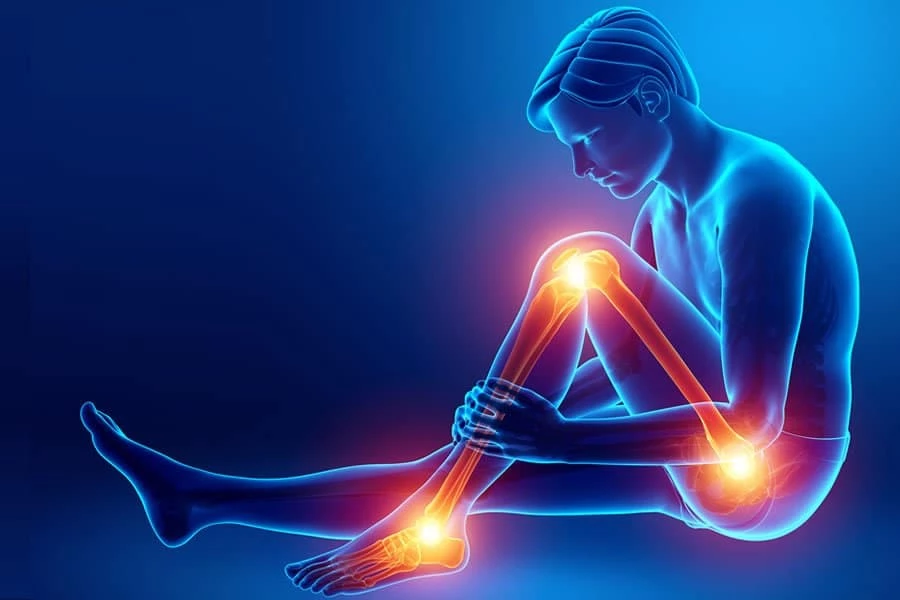Joint pain is a widespread health issue affecting millions of people globally, often arising from degenerative conditions such as osteoarthritis and rheumatoid arthritis or from acute injuries, particularly among athletes. These conditions result in significant pain, limited mobility, and a diminished quality of life for many individuals. Traditional treatments, including nonsteroidal anti-inflammatory drugs (NSAIDs), corticosteroids, physical therapy, and even surgical interventions like joint replacements, offer only temporary relief and often come with significant risks.
In recent years, stem cell therapy has emerged as a promising alternative that leverages the body’s inherent healing abilities to potentially regenerate damaged joint tissues, particularly cartilage, which is essential for joint function and mobility. This regenerative approach represents a shift toward treatments that aim to repair and restore function rather than just alleviate symptoms.
Understanding Stem Cells and Their Therapeutic Potential
Stem cells are unique, undifferentiated cells with the extraordinary ability to transform into various specialized cell types within the body. In particular, mesenchymal stem cells (MSCs), which can be sourced from a patient’s bone marrow or fat tissue, are being explored for their potential to alleviate joint pain through tissue regeneration and inflammation reduction. MSCs are known for their regenerative capacity and can differentiate into cartilage-producing cells, known as chondrocytes, which are crucial for maintaining healthy joints. By stimulating the production of these specialized cells, stem cell therapy offers a way to address the underlying cause of joint degeneration rather than just providing symptomatic relief.
How Stem Cell Therapy Works for Joint Pain
The core of stem cell therapy’s effectiveness in treating joint pain lies in its multi-faceted approach to tissue repair and inflammation modulation. Here’s a breakdown of the mechanisms by which MSCs contribute to joint health:
1. Cartilage Regeneration: Cartilage acts as a cushion between bones, allowing for smooth joint movement. However, cartilage has a limited ability to repair itself due to its lack of blood supply. Over time, this can lead to gradual deterioration, especially in conditions like osteoarthritis, where chronic inflammation accelerates cartilage breakdown. MSCs, when injected into the affected joint, have the potential to differentiate into chondrocytes, the cells responsible for creating and maintaining cartilage. This regenerative capability of MSCs has shown promise in restoring cartilage health, which can significantly reduce pain and improve mobility.
2. Anti-inflammatory Effects: Inflammatory responses within the joint are a major driver of osteoarthritis and other degenerative joint diseases. Studies now support the role of chronic inflammation in joint degeneration, particularly in osteoarthritis, where inflammatory processes contribute to the breakdown of cartilage and surrounding tissues. MSCs have been shown to release anti-inflammatory factors that mitigate these harmful effects, thus preserving joint health and reducing the risk of further damage. By reducing inflammation at its source, stem cell therapy offers a long-term protective action that not only alleviates pain but also helps to slow the progression of joint degeneration.
3. Immunomodulation: MSCs are also known for their immunomodulatory effects, which means they can adjust immune responses to prevent overactivity that might otherwise lead to tissue damage. In autoimmune conditions like rheumatoid arthritis, this capacity can be particularly beneficial. By promoting a balanced immune response, MSCs may help to prevent the joint tissue destruction often seen in these conditions, although more research is needed in this area.
Applications of Stem Cell Therapy for Joint Disorders
The potential applications of stem cell therapy for joint issues are vast and varied. Two of the most common areas where this therapy is showing positive results include:
1. Osteoarthritis (OA): OA is the most prevalent form of arthritis and is characterized by chronic inflammation and progressive cartilage deterioration. Traditional treatments for OA generally focus on reducing pain and inflammation but do not address the underlying degenerative processes. Stem cell therapy holds potential for not only alleviating pain but also halting or even reversing the degeneration. By regenerating cartilage and reducing inflammation, MSCs offer a new avenue of hope for those with OA, potentially allowing for enhanced joint function and quality of life.
2. Sports Injuries: Athletes are particularly prone to joint injuries, including ligament tears, meniscus injuries, and cartilage damage, which can be career-threatening. Increasingly, stem cell therapy is being utilized to treat these injuries, providing athletes with a way to recover faster and with less downtime than traditional methods. As Dr. Tulpule explains, “Stem cells allow athletes to recover faster with minimal downtime, enabling them to get back to their sport and potentially prolong their careers.” This is particularly appealing for professional athletes who need a swift return to high-performance activities. The minimally invasive nature of stem cell therapy and its potential for long-term benefits make it an attractive option for sports medicine.
Advantages of Stem Cell Therapy for Joint Pain
Stem cell therapy offers several advantages over traditional treatments, especially in terms of safety, efficacy, and sustainability of outcomes. Some of the most notable benefits include:
1. Minimally Invasive: Unlike joint replacement surgeries, which come with significant risks such as infection, blood clots, and extended recovery times, stem cell therapy is typically administered through a single injection. This minimally invasive approach reduces the risk of complications and allows for a much shorter recovery period, making it a more attractive option for many patients.
2. Long-term Relief: One of the critical advantages of stem cell therapy is its ability to address the root causes of joint degeneration rather than merely providing temporary relief from symptoms. Traditional treatments like NSAIDs or corticosteroids focus on managing pain and inflammation but do little to halt the underlying progression of conditions like osteoarthritis. By promoting cartilage regeneration and reducing chronic inflammation, stem cell therapy offers the potential for long-term relief, allowing patients to experience sustained improvements in joint function and quality of life.
3. Personalized Treatment: Because MSCs are often derived from the patient’s own body, the risk of rejection or adverse reactions is minimized. This autologous approach (using cells derived from the patient) enhances the safety profile of stem cell therapy and allows for a more personalized treatment experience.
4. Reduced Dependency on Medications: Many patients with chronic joint pain rely heavily on medications to manage their symptoms, which can lead to unwanted side effects and long-term health risks. By providing a more effective and sustainable solution, stem cell therapy can potentially reduce patients’ dependence on medications, leading to better overall health outcomes.
Challenges and Future Directions
Despite its promise, stem cell therapy is not without challenges. The field is still evolving, and further research is needed to fully understand the optimal protocols for treatment, including the best sources for stem cells, ideal dosages, and long-term effects. Additionally, the cost of stem cell therapy can be prohibitive for many patients, as it is often not covered by insurance. However, ongoing advancements in stem cell research, coupled with growing evidence of its effectiveness, continue to pave the way for more accessible and effective treatments.
The Bottom Line
Stem cell therapy is redefining the treatment landscape for joint pain by offering a minimally invasive, regenerative approach that addresses the root causes of joint degeneration. Through cartilage regeneration, anti-inflammatory effects, and immunomodulation, mesenchymal stem cells hold the potential to provide long-term relief for conditions like osteoarthritis and sports injuries. While challenges remain, particularly in terms of accessibility and cost, the future of stem cell therapy looks promising. As research progresses and protocols are refined, stem cell therapy may well become a cornerstone in the treatment of joint pain, improving mobility and quality of life for millions worldwide.






